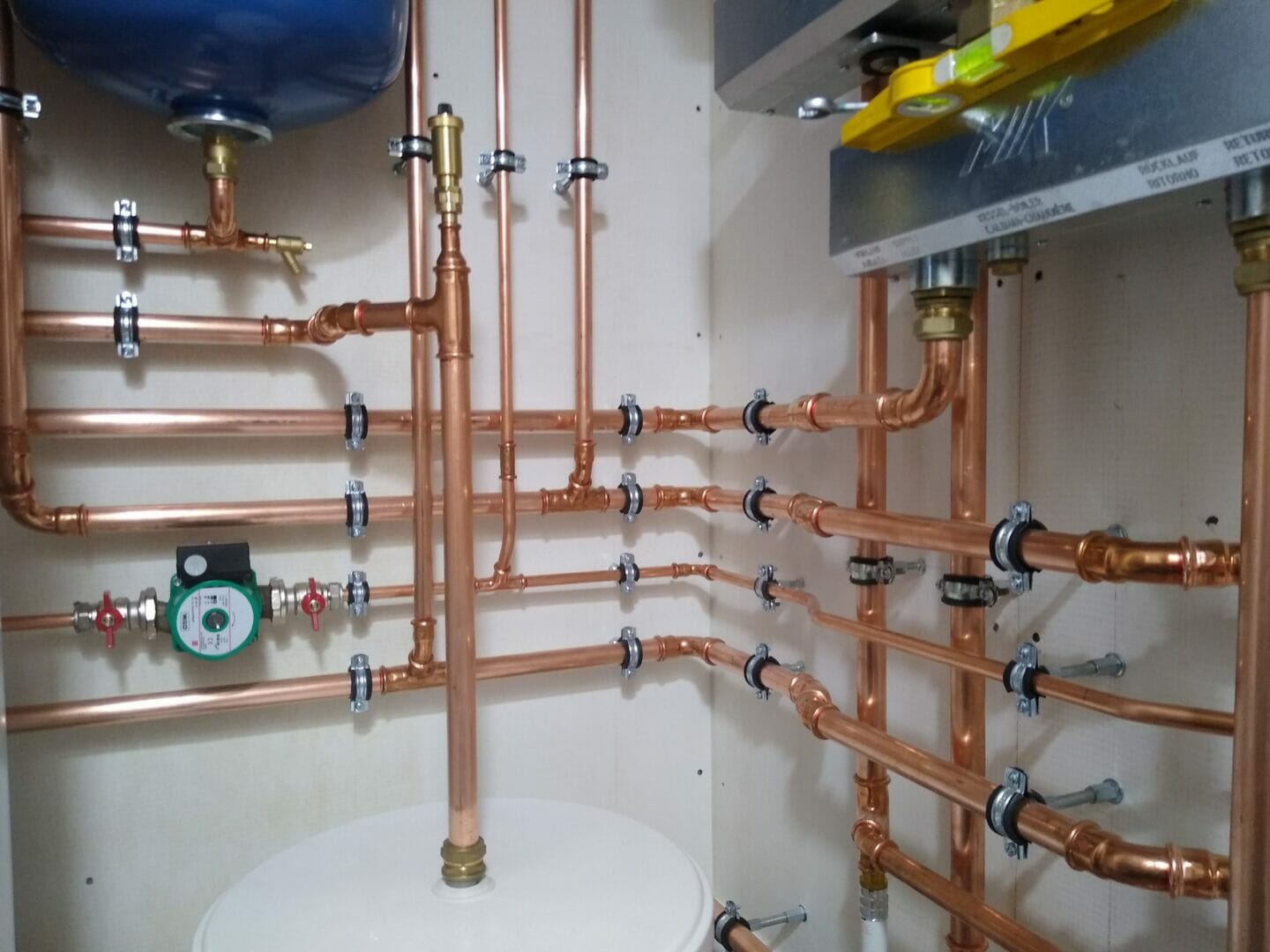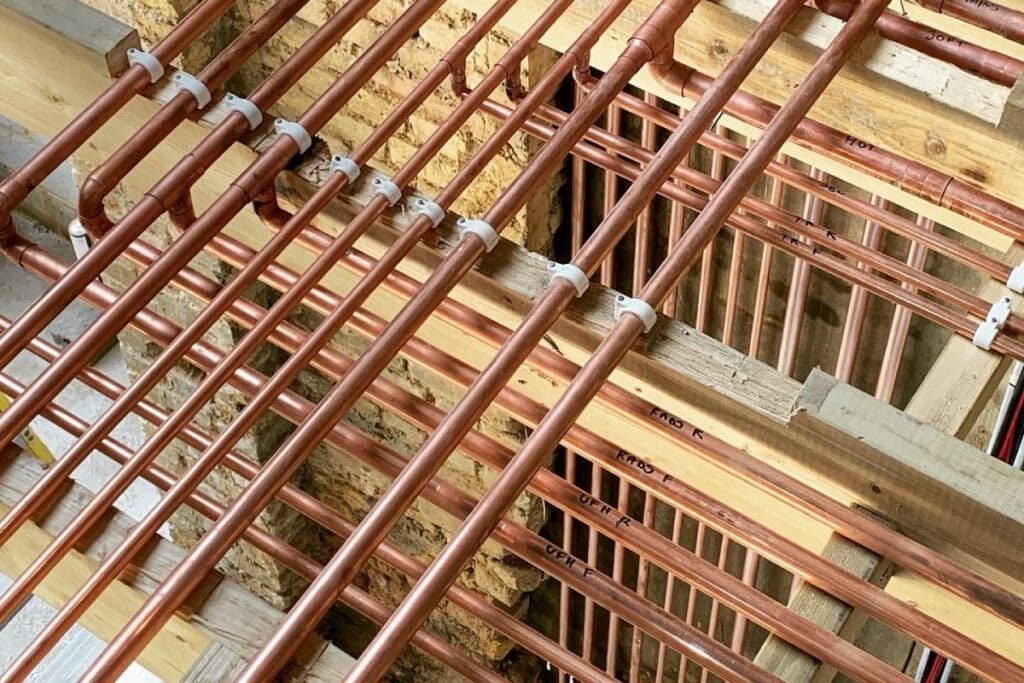
Over the last couple of decades, plastic has become increasingly prevalent in the built environment. Looking back to the 1990’s and earlier, copper plumbing fixtures would have been the norm in all new buildings but now, nearly all new buildings use plastic pipes both in underfloor and plumbing applications.
We all know that the planet is experiencing a climate emergency and the overuse of plastics is a huge contributing factor. Since its invention over 60 years ago, plastic use has grown exponentially – in all industries, not just in construction and plumbing – and has resulted in the creation of more than 8.3 billion metric tonnes of various plastics. As a result, according to the Resource Efficiency Collective, in the region of eight million tonnes of plastic waste enters the ocean every year – more than twice the annual consumption of plastics in the UK.
To protect our planet without hindering technological advancement or compromising the lives of future generations, it is critical that we use materials which can meet our needs without depleting our natural resources or causing damage to our environment. And this is where copper comes in.
Copper is an extremely favourable material – it has exceptional durability and resistance to corrosion, it is one of the most versatile materials on the planet, and it is infinitely recyclable so can be re-used repeatedly without losing its properties. The Copper Sustainability Partnership (CuSP) is to this end, on a mission to fight back against the plastics greenwash and support the industry to use copper as the driving force for a better future.
What is CuSP?
CuSP was created by two competing copper tube manufacturers, Lawton Tubes and Mueller Europe, who have joined forces to promote the benefits of copper and fight back against the plastics greenwash.
Our aim is to challenge norms and break the mould to achieve greater environmental thinking, insight sharing, and collaboration within the plumbing and construction industries. Working alongside organisations such as the Alliance for Sustainable Building Products, we are taking a stand against the inaccuracies of the plastics greenwash, to improve the quality of materials used in the built environment.
It’s critical that, as an industry, we use materials which can meet our needs without depleting our natural resources or causing damage to our environment and health – and copper provides the perfect solution.
The plastics greenwash
The transition from copper to plastic in the plumbing industry and the built environment is mostly down to the plastics industry focusing on the benefits, while downplaying the environmental impact and greatly exaggerating its recyclability.
Despite industry bodies’ suggestions that plastic pipes are fully recyclable and have a circular, end of life economy, one important fact remains – most plastics are still not being recycled. Many plastic manufacturers pledge their commitments to developing a catalogue of 100% recyclable products where the raw materials can be used and re-used without the loss of quality or use of finite fossil fuels, however, forgive the pun but this remains a ‘pipe dream’.
The plastic compounds used for pipe are created with hydrophobic properties also known as PBT (persistent, bio-accumulative toxic) materials, which are particularly troublesome when they enter the environment. If given the right conditions, plastic chemicals can leach into water or substances they come into contact with, which could prove harmful to humans or other organisms.
Research suggests that cutting plastic consumption by half while making the remainder from non-fossil fuel compounds will make it possible to cut global emissions from plastics from 1,984 Mt CO2e in 2015 to 790 Mt CO2e in 2050. It is no small feat to reduce our current plastic consumption by half, but a key component of making this possible is to replace and substitute materials used across key manufacturing sectors, which combined account for more than 60% of plastics emissions.
The sustainable solution
As a material and an industry, copper is working hard to protect the environment in which it came from. According to the International Copper Association, about two thirds of copper produced since 1900 is still in use today, with more than 30% of demand met solely by recycled sources. Additionally, the US Geological Survey recently conducted research into the world’s copper resources and discovered there are approximately 5.6 billion metric tonnes available to use, a figure more than sufficient to surpass both current and future demand.
Trades such as construction and plumbing have a history of having a strong circular economy when it comes to the use and re-use of copper pipes. The metal from old or redundant pipework is recovered before being melted and cast into new products, ready for installation to start the cycle once again.
Because of copper’s unique ability to be recycled over and over without any loss in performance or properties, around half of Europe’s copper demand is currently being met by recycled materials and approximately 30% of demand globally, drastically reducing the need for mining. What’s more, as recycling techniques improve, this figure will continue to increase and the need to mine will continue to decline.
Looking to the future
To create a future that isn’t reliant on finite resources, we need to look at materials which can offer far more for the environment and the people it serves, without limiting the progress of innovation.
Unlike alternatives, copper has natural anti-bacterial and anti-microbial properties, which supports the maintenance of healthy drinking water and is frequently used in hospitals because of its natural ability to protect the health of patients.
As far as plumbing is concerned, copper is the pro-plumber’s material of choice. It is an all-natural material that doesn’t leach toxic substances and it provides incredible thermal resilience, making it the only material able to withstand thermal shocking at 70 degrees Celsius.
It is also a material that’s able to keep its integrity for hundreds of thousands of years. For example, copper makes up part of Sweden’s nuclear waste handling technology where copper canisters encapsulate the radioactive waste for long-term storage. The canisters are required to keep their integrity for at least 100,000 years but are thought to last five times longer.
With use in industrial products required to keep their reliability for hundreds of thousands of years, it’s clear copper can meet the requirements of a future where people need to get more value from less and use more ethically and sustainably sourced resources. Returning to copper will ultimately support the industry make our homes and way of living more environmentally friendly.
Make the commitment to copper
CuSP welcomes likeminded organisations which are interested in championing environmental thinking, insight sharing, and collaboration to further highlight copper as a material for the future. We welcome organisations and academia to get involved to create a UK-wide network to support the use of copper and reduction of plastics within the trades.
If you’re interested in joining forces with CuSP, committed to taking a stand against the use of plastics in the built environment and promote copper as the driving force for a better future, we’d love to hear from you.
To find out more, and to contact us about becoming an associate member, please visit www.cuspuk.com or follow on Twitter and LinkedIn.
Make the right choice. Make the commitment to copper.


